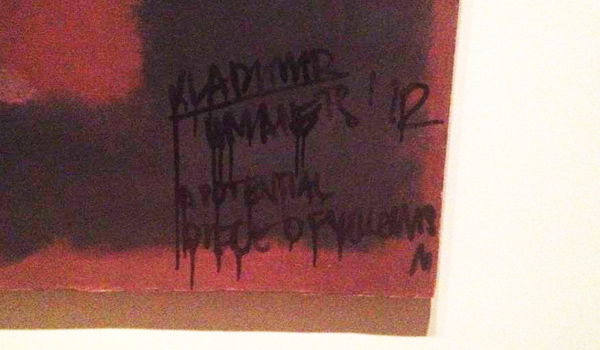Art & Exhibitions
Yellowist Artist Regrets Tagging Tate’s Rothko, Espouses Principles of Yellowism


Sarah Cascone

Vladimir Umanets, the infamous vandal who in 2012 defaced Mark Rothko’s 1958 painting Black on Maroon, has published a column in the Guardian apologizing for his crime and explaining his misguided motivations. Despite his remorse, Umanets still stands by his mission to promote the radical art movement known as Yellowism.
As artnet News reported earlier this week, a team of conservators was able to restore the damaged area of the piece, which just went back on display at Tate Modern after 18 months of restoration.
In his piece, Umanets starts of by admitting that “it was wrong to deface the work of a fellow artist, more poignantly a piece by Rothko, whose work and ethos I greatly admire.” He goes on to cite Oscar Wilde—”Yet each man kills the thing he loves”—explaining that the act was a spontaneous, ill-thought out attempt to introduce the world to Yellowism, a movement meant to promote genuine creativity in contemporary art.
Umanets recognizes that his admittedly selfish actions did more than damage an important piece of art and hurt art lovers. “My actions were wrong because they served not only to heap ridicule upon myself,” he writes, “but also to turn the public against Yellowism.”
He believes he has learned from his year and a half in jail, and that he is now well positioned to comment in a productive, non-destructive manner on what he sees as the art world’s lack of creativity and originality. He asks:
Where are the new art movements? Where lies the voices of visceral dissent and thirst for change? Art has become a business, which appears to serve only the needs of the art market. As a result the art world no longer has radical thinkers and polemicists willing to scythe new and different pathways. Everyone is playing safe.
The artist concludes by calling his experience “an expensive lesson,” apologizing again to to the Rothko family, art enthusiasts, and the British public, and expressing his happiness that the repaired painting is once again on view.